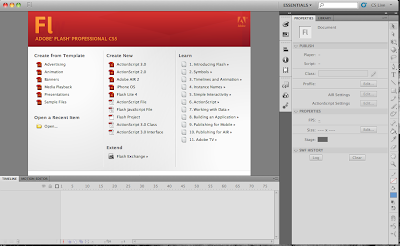1. What are you doing to setup your Cycle 1? Cycle 1 includes your first detailed plan of action for you Action Research project. Please refer to this URL: http://web.me.com/suebedard/AR/Cycle_1.html
In addition, many of you will begin analyzing your Cycle 1 data in month 6 of our program. Please refer to this URL for the primary questions you will answer during your first cycle of data analysis: http://web.me.com/suebedard/AR/C1_Data.html
Cycle 1 setup:
My preparation for cycle one is as follows:
1. Define goal
2. Choose simulation and participating class
3. Familiarize myself and classroom teacher with the game
4. Gather background information
5. Design a pretest for class
6. Design a post test for class
I have refined my goal and rewritten my literature review to reflect these changes. My stated goal is to incorporate educational simulation games into the classroom. My approach is to take a non-gaming teacher and have her use a simulation game to teach immunization in the Allied Health class.
The game I chose is Immune Attack. This is a simulation game designed by the America Federation of Scientists. It is played like many of the arcade games that students already play.
I have played the game and made a tutorial Screen flow, which will be shared with the teacher and students who will play the game.
I am gathering background information by designing two surveys. The first survey is for all teachers in my building. It will give me data concerning teacher attitudes towards games and their understanding of simulation games. The second is for the students who will play the game. It will give me data concerning student gaming habits and their attitude toward educational games.
I will work with the class teacher to design a pre-assessment test and a post assessment test. This will follow the standard NC CTE model that determines student learning.
2. What kinds of data are you planning to collect and analyze to show that your AR project is effecting changes and growth for yourself, your intended target audience, and your AR project setting: Quantitative (e.g., Surveys or Self-Report instruments), Qualitative (e.g., field notes, personal logs, record sheets, interviews, video taping, audio recordings)? How will you measure and report the results of these data once collected? Please answer both of these related questions thoroughly.
My quantitative data will be limited to teachers in my building and the students in the class. It will consist of one survey for teachers concerning their knowledge and attitudes toward simulation games. There will be two surveys for the students. The first will ask questions about their gaming habits and the second will ask questions about the game Immune Attack. The second survey will be given after all students have played the game.
Qualitative data will be collected through interviews (mostly audio) with students and teachers as well as notes collected during the implementation of the game.
Student learning growth will be measured through a standard NC CTE type test given as a pre-test and a post-test. There will be no control group in this study. Data that is collected will be reported by both a spreadsheet on the survey and written reports, since some of the survey questions are written opinions.
3. How is your Action Research textbook assisting you with your AR design and development processes? I strongly recommend you read parts III and IV of your McNiff & Whitehead AR textbook if you have not. These sections succinctly explain the designing and doing components of completing a quality AR project?
I am using my textbook as a resource for planning my AR project. I don’t think I could plan without it. The book helps me understand what I am trying to do and really helps me organize my time. Also, having to write about it forces me to think about how I am using the text. One thing I am continually reminding myself is to keep my project “small – focused – manageable.” In my lit review, I have found a mountain of interesting articles. I need to skim and exclude about 80% of these. They are interesting, but do not directly relate to my project.
The text also helps in setting up my data collecting and validating that data. It has also given me advice on getting others involved in my research. Right now I have my principal and two other teachers informed and involved. I am relying on my critical friends to help guide me. I am also learning to weigh my data after I collect it. The book includes a list of questions I need to ask myself as I proceed (pages 103 – 106). This should help me stay focused. It also is advising me on organization of my materials and using things such as photos, videos, sound recordings, diaries and questionnaires. This is material I need to collect during my research. If I neglect this, I won’t have materials to substantiate my project.
4. How has this month’s course helped in shaping your AR project?
This month has helped me to fine tune my AR project. It has forced me to take a critical look at what I have done and what I plan to do. The best part of this month was the sharing of information. I have gone through bouts of frustration with developing my AR project. By working in groups and especially the review at the end, I have been able to see where everyone else is in their research. Some are way ahead of me and others are not as advanced as I am. So I feel a little better about my project. The information I got from my professor and my fellow students has helped me direct my research. I am not as organized as I would like to be, but this month has seen my AR organization become much more cohesive.



















